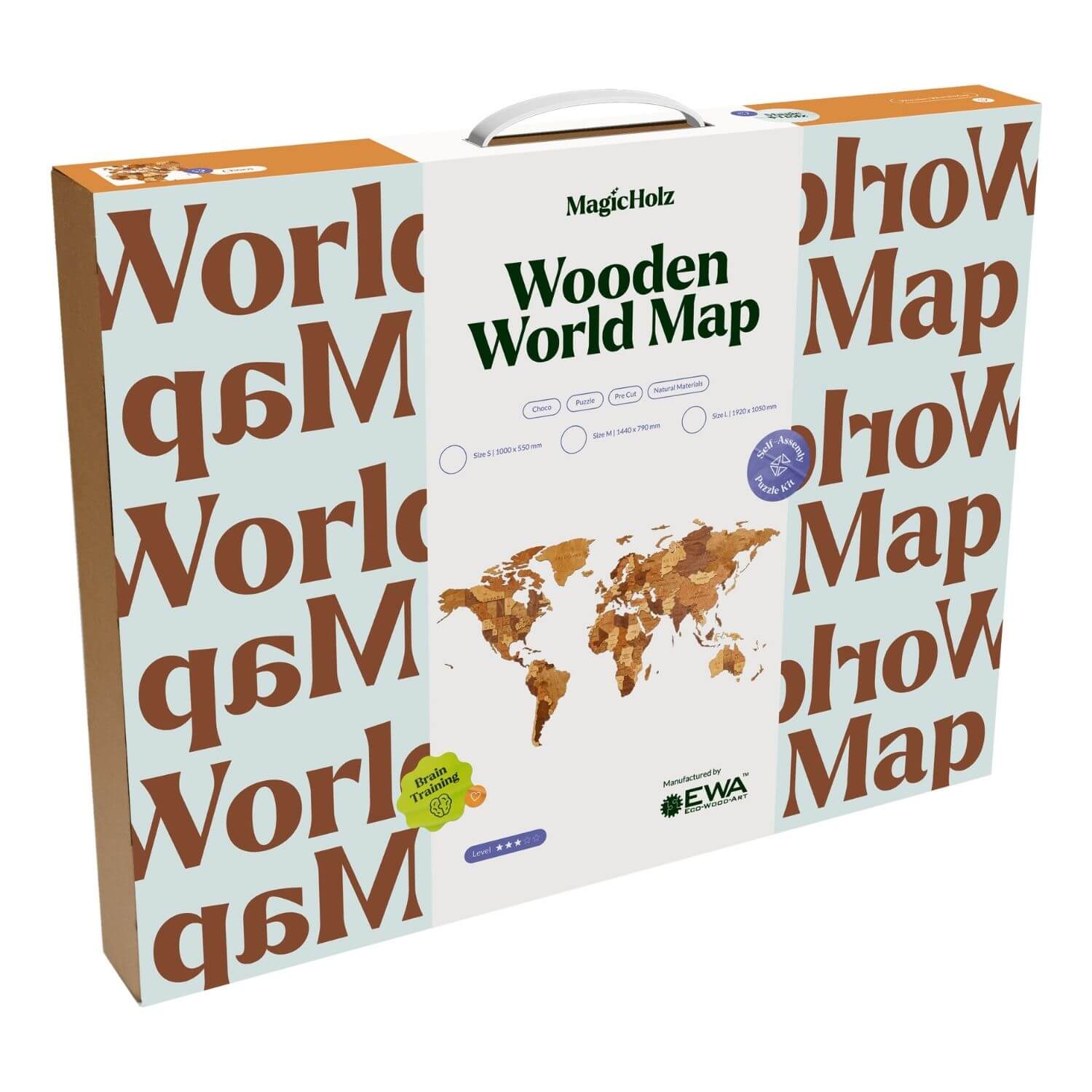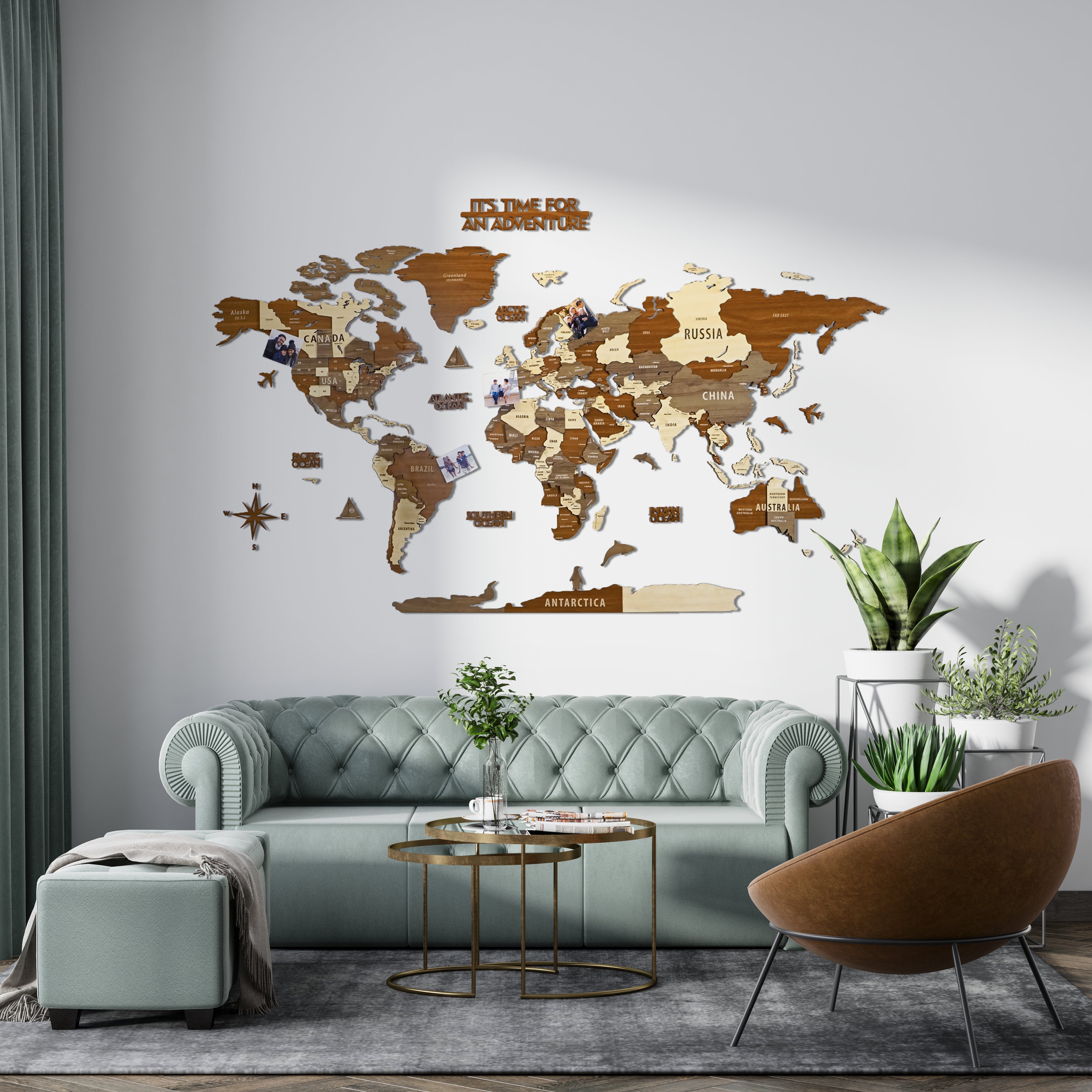Understand Different Techniques for Crafting Worldmap Wood

Creating a captivating and aesthetically pleasing Worldmap Wood is a skill that combines artistry, craftsmanship, and a keen understanding of materials. The beauty of a world map wooden piece lies in its intricate design, natural appeal, and the ability to serve as both decor and conversation starter. Whether you’re a seasoned woodworker or a beginner exploring this craft, understanding various techniques can elevate your work and produce stunning world map wooden wall decor that resonates with your style and purpose.
In this comprehensive guide, we’ll explore different methods, tools, and artistic approaches for crafting worldmap wood, diving into the nuances of each technique. From the initial design phases to fine finishing, you’ll discover how to bring your vision of a world map wooden wall to life with precision and creativity.
Worldmap Wood

The concept of Worldmap Wood blends the natural charm of wood with the universally recognizable motif of world geography. Creating a world map wooden piece demands a meticulous approach, combining knowledge of cartography with woodworking expertise.
This craft not only requires technical skills but also an artistic eye for detail, proportion, and aesthetics. It’s about transforming raw timber into a detailed canvas depicting continents, oceans, and landmarks. The process involves planning, selecting appropriate wood, and choosing the right carving or engraving technique to achieve a visually compelling worldmap wood.
Crafting worldmap wood can be a rewarding experience, especially when it becomes a centerpiece that sparks curiosity and admiration. The final product, whether it’s a large wall art or an intimate decorative piece, can serve to inspire wanderlust, educate, or simply beautify a space. Understanding the core principles of this craft paves the way for innovative expression and personalized touches.
Techniques in Designing the Worldmap

The foundation of a quality worldmap wood is in its design. Artists can utilize various methods to create accurate, artistic, and durable representations of the globe.
One of the primary techniques involves laser engraving, which offers precision and fine detail. Using laser engravers, artisans can carve intricate borders, coastlines, and geographic features directly into the wooden surface. This technique provides consistent quality and allows for complex designs to be replicated easily, making it popular for mass production of wooden world map decor.
Alternatively, hand-carving techniques lend an organic, textured feel to the piece. Skilled craftsmen can use chisels, gouges, and carving knives to etch the continents and borders, creating a tactile experience. This method, while time-consuming, offers unique variations and a more handcrafted aesthetic. It’s especially appealing for custom pieces that emphasize artistry and individuality.
Another approach is pyrography, or wood burning. Using specialized pens, artists shade and outline the international borders, adding depth and contrast to the world map wooden piece. Pyrography provides a warm, rustic look and can be combined with other techniques to enrich the visual complexity of the worldmap wood.
Material Choices for Crafting the World Map
The selection of wood significantly impacts the appearance, durability, and overall effect of Worldmap Wood creations. Different types of wood offer varying textures, colors, and workability.
Hardwoods such as oak, maple, and walnut are favored for their strength and beautiful grain patterns. Walnut, in particular, offers a rich, dark hue that contrasts well with lighter woods, creating vivid map features. It’s also highly durable, suitable for detailed carving and engraving.
Softwoods, like pine or cedar, are easier to work with and ideal for beginners or for large-scale projects that require less detailed work. They tend to be lighter and may lend a more rustic or vintage vibe to the finished world map wooden wall decor.
In addition to choosing the right type of wood, surface treatments like staining, sealing, and polishing are important to enhance the natural beauty of the wood. Light stains can highlight the grain, while darker finishes create striking visual effects reminiscent of antique maps. Using wooden world maps with layered or mixed woods can also add complexity and dimension, elevating the overall aesthetic.
Finishing and Assembling the Wooden Map

Once the design and material selection are complete, the next step is finishing and assembly. Fine finishing techniques ensure the world map wooden piece stands the test of time and retains its visual appeal.
Sanding is crucial to smooth rough edges, prepare the surface for finishing, and enhance tactile quality. After sanding, the application of finishes such as varnish, lacquer, or natural oils can protect the wood from moisture and wear, while adding gloss or matte effects as desired.
In some cases, the map’s components — such as individual continent pieces or labels — are assembled separately and then mounted onto a backing board. For large world map wooden wall decor, mounting hardware needs to be carefully selected to ensure stability and ease of installation.
The finished worldmap wood can be framed or left bare for a raw, natural look. Some artists also incorporate additional elements like push pins, indicating visited locations, which enhance interactivity and personalization.
World map wooden

The world map wooden artwork is a timeless decor element that combines craftsmanship with global context. Its appeal lies in the natural beauty of wood combined with the intellectual allure of world geography.
The process of creating a world map wooden piece involves translating two-dimensional cartographic data into a three-dimensional format, which can then be realized through various craftsmanship techniques. Artistic expression plays a crucial role, whether opting for a minimalistic outline or detailed woodburned topography.
Artistic Styles in World Map Wooden

Artists and craftspeople often develop a signature style that sets their world map wooden apart. One popular trend is the minimalist interpretation, where only the outlines or borders are carved into a light-colored wood, creating a sleek, modern look suitable for contemporary interiors.
On the other hand, some artisans prefer a vintage style, incorporating darker woods, intricate carving details, and aged finishes that evoke antique maps. This approach lends a sense of history and depth, perfect for those who want their world map wooden wall decor to tell a story.
Another artistic option involves layered wood—cutting out layers of different colors or grains to add dimension and contrast. For example, darker map features can stand out against a lighter background, adding visual interest and tactile richness.
Technical Aspects and Tools

The creation of world map wooden pieces requires specific tools and technical skills. Laser cutters and engravers are increasingly popular for their speed and high precision, especially when reproducing detailed geographic features.
Hand tools, such as carving knives, gouges, and chisels, are essential for artisans who prefer a handcrafted, textured finish. These tools allow finer control over the carved details and enable personalized touches that digital methods might lack.
Additionally, some artists utilize CAD (Computer-Aided Design) software to conceptualize and plan their world map wooden projects. This digital planning ensures accuracy and helps visualize complex layers or color schemes before beginning the physical work.
Customization and Personal Touches

One of the attractions of world map wooden art is its potential for personalization. You can customize the map to highlight specific regions, add engraved labels, or include markers for visited places.
Incorporating push pins, like those available on the wooden world map, allows for interactive and personal displays, making the world map wooden not only decorative but also functional.
Furthermore, combining different finishes, such as matte and glossy, or layering various woods, can create a unique world map wooden piece that reflects individual tastes and narratives.
World map wooden wall decor

The world map wooden wall decor stands as a sophisticated focal point in any space, blending artistic craftsmanship with global exploration themes. Its craftsmanship process involves several stages, from initial design to installation, each reflecting craftsmanship, attention to detail, and aesthetic sensibility.
The key to impressive world map wooden wall decor lies in harmony between design choices and execution. Whether opting for a sleek, minimalistic look or a rustic, vintage aesthetic, understanding different techniques helps craft a piece that enhances interior spaces and sparks conversations about travel and adventure.
Design Principles for Wooden Wall Decor
Designing world map wooden wall decor requires a balance between visual impact and practicality. The size must complement the space without overwhelming it, and the color palette should match the surrounding decor.
Artists often choose contrasting finishes—dark carved contours against light backgrounds—to emphasize geographic details. Beyond aesthetics, durability and ease of installation are important considerations. Lightweight materials and secure mounting options ensure the piece remains pristine and safely mounted.
Popular design themes include vintage maritime maps, modern abstract styles, or detailed topographical representations. Each theme influences the carving and finishing techniques used, making each world map wooden wall a unique expression of the creator’s vision.
Techniques to Enhance Visual Appeal
To create compelling world map wooden wall decor, artisans leverage multiple techniques. In addition to laser engraving for sharp, precise outlines, wood staining can be used to add color and depth, emphasizing landmasses and oceans.
Intaglio or burning techniques can create textured effects, adding dimensionality and tactile interest to the map. Layered wooden world maps—where different planes are stacked or inset—add visual depth and generate a dynamic three-dimensional effect on the wall.
Another innovative approach involves integrating LED lighting behind or within the map structure. This not only highlights geographic features but also creates ambient lighting effects, perfect for modern interior design.
Installation and Maintenance
Proper installation of world map wooden wall decor is crucial to preserve its beauty and structural integrity. Using appropriate anchors, screws, and mounting hardware ensures safety and ease of hanging.
Maintenance involves light dusting with a soft dry cloth and occasional reapplication of wood finishes to keep the surface looking vibrant. Protecting the piece from excessive moisture or direct sunlight preserves the wood’s natural appearance.
The choice of mounting location enhances the visual impact. Highlighting the map with strategic lighting, or positioning it above common areas like living rooms or offices, turns this decor into a focal point, inspiring curiosity and exploration.
Conclusion

Understanding different techniques for crafting Worldmap Wood opens a world of possibilities for creating beautiful, meaningful, and durable wall decor. From meticulous design and material choice to innovative carving and finishing methods, each step influences the final aesthetic and functionality of world map wooden art. Whether aiming for a minimalist elegance or rich vintage charm, artisans can tailor their approach to suit their vision and space. In recent times, incorporating interactive elements such as push pins adds personal engagement, transforming the world map wooden into a dynamic testament to travel and discovery. Mastery of craftsmanship and design principles ensures that every world map wooden wall becomes a captivating centerpiece that inspires adventure, education, and aesthetic appreciation for years to come.
